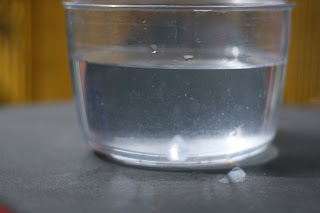Retratos
água como lente/filtro da visão.
mentalização simultânea na hora estipulada, cada um de nós se concentrará na imagem de um dos participantes do Corpo d'água- focalizando esta pessoa a partir das lentes da água.
A mentalização/ ação terá a duração de 15 a 30 minutos, de acordo com o evento/invento de cada um.
A diretriz é pensar focalizadamente na pessoa estipulada tendo a água como filtro ou lente no desenvolvimento desse afeto e contatos acumulados (pros que não se conhecem e para os que se conhecem). Muito importante que todos comecem JUNTOS.
Durante ou após o período de mentalização, produzir um registro- que pode ser sonoro, visual, escrito.
A sequencia de pessoas foi escolhida aleatoreamente por sorteio.
Inicialmente pensamos que seria interessante o agendamento de DUAS pessoas por dia, assim teriamos concluído os 6 na quinta-feira.
(algo me diz que talvez funcionaria melhor uma por dia, mas vamos tentar assim?)
Cada pessoa escolhe a hora em que prefere e quer ser pensada e envia um email ASAP para todos:
Assim, amanhã é o dia de aguar Bianca e Otto
Na quarta João e Natália e
na quinta Dani e Gabriela.
O horário que eu escolho para ser pensada é as 10:30 da manhã aqui (16:30 na alemanha, e creio que 9:30 no brasil).
Aguardamos que otto nos responda o horário em que ele quer ser visualisado através de nossas águas mentais.
Muito importante manter o horário estipulado- pensamos que o mais interessante não é encontrar um horário onde todos temos "livre", mas a variedade de atividades com as quais estamos envolvidos no período de duração da ação e como cada um resolverá esse problema criativo a partir de suas limitações espaço-temporais (jeito fino de dizer "agenda busy").
A idéia é guardarmos essa coleção de registros, os retratos, que serão material criativo pra uma das atividades em Weimar.
A partir da semana que vem iniciamos outro tipo de ações simultâneas, focalizando águas interiores, fluidos externos, água como espaço transitório, filtro.
Também falamos sobre algumas ações que temos pensado e outras que já estão sendo executadas. Dani deu um update no problema dos banhos no M10 e como isso poderia ser integrado na residência como ritual/ação.
Então tá pessoal, espero todos vocês pensando em mim em água amanhã as 10:30
uns beijos e força pra todo mundo nesse final de semestre/ano letivo.






 Sempre gostei dos trabalhos de Phillipe Ramette, desde que vi uma de suas obras em uma exposicão coletiva em Jena.
Sempre gostei dos trabalhos de Phillipe Ramette, desde que vi uma de suas obras em uma exposicão coletiva em Jena. Ele constrói esculturas de madeira que propiciam ao corpo ficar verdadeiramente na posição em que o vemos fotografado, ou seja, não há colagem. O corpo forma a paisagem assim mesmo, por esses ângulos.
Ele constrói esculturas de madeira que propiciam ao corpo ficar verdadeiramente na posição em que o vemos fotografado, ou seja, não há colagem. O corpo forma a paisagem assim mesmo, por esses ângulos.




